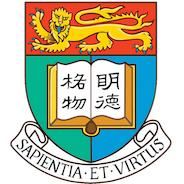About Us
The School of Public Health is committed to protecting and improving health for all people, through the synthesis of state-of-the-science research and effective knowledge exchange. Over the years, we partner with a broad spectrum of service and community partners from the local regional and international agencies, o promote health, strengthen capacity and effective policy improvements.
The School is a designated WHO Collaborating Centre (WHOCC) for Infectious Disease Epidemiology and Control. Our team consists of public health physicians and nurses, epidemiologists, statisticians, and health educators. Our research and expertise focused on the control and prevention of infectious diseases, and has developed a world-leading reputation in influenza virus epidemiology research. We are experienced in conducting large scale epidemiological research and health promotion projects on influenza transmission and surveillance in various community setting, including hospital, outpatient clinics, households, elderly homes, university, primary and secondary schools, and kindergartens.
Microbe Fighters: Programme Information
Children represent a vulnerable population for different common communicable diseases (CDs), including influenza, due to their premature immunity and poor hygiene practices. Schools are high-risk for CD outbreaks because of the high contact intensity between school-aged children in this setting. In addition to the CD associated morbidity and potential mortality, outbreaks may cause considerable disruption to learning, as a result of either school absenteeism due to clinical illness or school closure which is adopted as a public health strategy to stop CD transmission. Strengthening the understanding of CD prevention and the cultivation of good personal hygiene practices is of utmost important for the effective prevention of CD transmission in school.
The health promotion programme will commence in the school academic year 2018/19 for early school-aged children in primary schools (P1-3, aged 6-9) in Hong Kong. For each of the participating school, all teachers and students will be invited to attend a face-to-face health promotion session and the train-the-trainer programme.
This comprehensive health promotion programme aims to improve prevention health concept and knowledge on CDs prevention among primary school students, teachers and their parents through face-to-face talks, train-the-trainer programme and online educational video clips. The aim of the programme is to get the important health message across and to enhance the development of appropriate personal hygiene among your students, and to sustain the impact on disease prevention in schools in an effective and sustainable manner.
What is COMMUNICABLE DISEASES?
Communicable diseases refer to infectious agents infect humans in different transmission modes. There are three common transmission modes in school’s environment including:
Contact transmission
- Through direct contact with the infected persons
- Through indirect contact with contaminated objects
Air-borne transmission
- Infectious agents float in air for some time and are inhaled by human through respiratory tract.
Droplet transmission
- Through inhale of droplets expelled by infected persons.
- Through contract of droplets and subsequent touching of nose, mouth, and eyes.
Common communicable diseases in school’s environment
Signs & Symptoms of CDC including:
Influenza
- Fever ≥37.8℃
- Headache
- Fatigue
- Muscle pain
- Cough
- Sore throat
- Runny nose
Hand, foot and mouth disease
- Fever ≥37.8℃
- Poor appetite
- Fatigue
- Sore throat
- Blisters in mouth, on hands and foots
Gastroenteritis
- Fever ≥37.8℃
- Abdominal pain
- Vomiting
- Diarrhoea
Acute conjunctivitis
- Itching eyes
- Redness of eyes
- Matted eyelids after sleep
Chickenpox
- Fever ≥37.8℃
- Itchy skin rashes
What is INFLUENZA?
Seasonal influenza is a respiratory tract infection caused by the influenza virus. There are various types of influenza viral strains causing this disease. It is usually more common from January to March (Winter epidemic) and from July to August (Summer epidemic) in Hong Kong.
Influenza Virus Strains
- There were three recognized types of influenza viruses, including A, B and C. Influenza A viruses are further categorized into subtypes on the basis of two surface antigens: Haemagglutinnin (H) and neuraminidase (N).
- With different types of influenza viruses, the infection caused by influenza A viruses is more common. In Hong Kong, the two subtypes of influenza A, H1N1 and H3N2, are commonly seen in Hong Kong.
Incubation Period
- After a person is infected, the symptoms of influenza typically take 1-4 days to appear . The disease is usually self-limiting with recovery in 2-7 days.
Infectious Period
- Infected persons may pass the viruses to other people 1 day before and up to 5–7 days after they develop symptoms. Sometimes the period may be even longer in young children or severely immunocompromised persons.
Mode of transmission
- Influenza viruses can spread through droplets when infected people cough, sneeze or talk. The infection may also spread by direct contact with the secretions of infected persons.
Signs and symptoms of Influenza
- Fever ≥ 37.8℃
- Headache
- Fatigue
- Muscle pain
- Cough
- Sore throat
- Runny nose
Management
- Stay home to rest and drink plenty of water.
- If having any mentioned symptoms of influenza, refrain from school and consult doctor if the symptoms persist or deteriorate.
- Antiviral agents can ease the severity and duration of illness. Take medication according to doctor’s prescription.
- Antibiotics targeting bacterial infection do not cure infection caused by viruses and this is not needed.
Prevention
There are several prevention methods that the public can do to prevent transmitting the disease and to defend themselves from getting infected, like wearing a mask, keeping hand clean etc. Our previous study has found that facemasks and hand hygiene can reduce household transmission of influenza by 67% in a household setting*.
- Keep good personal hygiene
- Proper hand washing with liquid soap and water
- When not able to washing hand, use hand sanitizer
- Wear a surgical mask if you have respiratory symptoms
- Cover nose and mouth when sneezing or coughing
- Soiled tissue paper should be disposed in a lidded rubbish bin
- Wash hands after coughing and sneezing
- Keep good environmental hygiene
- Maintain good indoor ventilation
- Keep household area clean
- Vaccination
- The most efficient way to prevent influenza and its complications
- It is recommended that flu vaccination should be received in autumn every year. About 2 weeks after vaccination, the body will develop a sufficient level of antibodies to protect against influenza virus infection
- Health lifestyle
- Maintain a healthy diet
- Take adequate sleep
- Exercise regularly
* Cowling BJ, Chan KH, Fang VJ et al. Facemasks and hand hygiene to prevent influenza transmission in households: a randomized trial. Annals of Internal Medicine, 2009; 151:437-46
Personal Hygiene: Handwashing
5 Steps for Handwashing
- Wet your hands with water
- Apply liquid soap
- Rub your hands in the correct way for at least 20 seconds
- Rinse with water
- Dry your hands with paper towel
6 Moments for Handwashing

When you enter school or return home

Before you eat and drink / touch food

After you have been to the bathroom

After you cough or sneeze
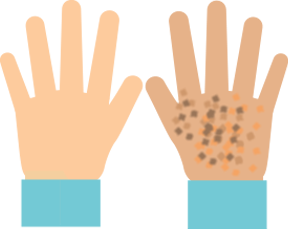
When hands are visibly dirty

After you touch your pets
7 Techniques for Handwashing

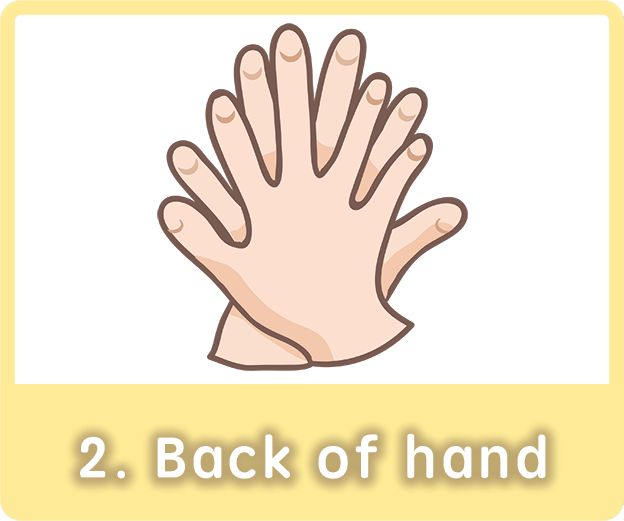
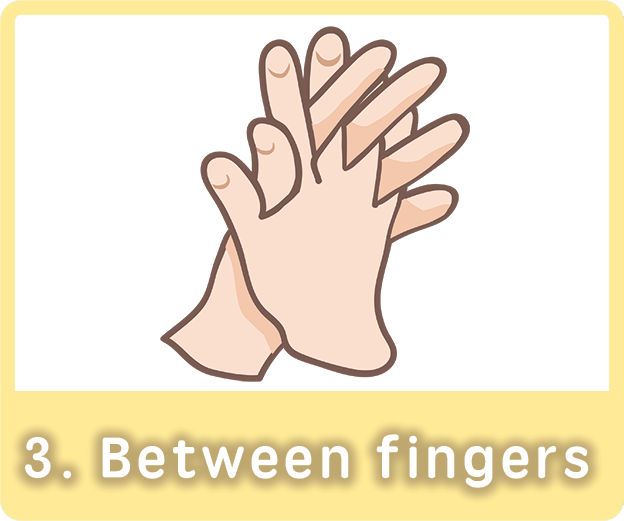
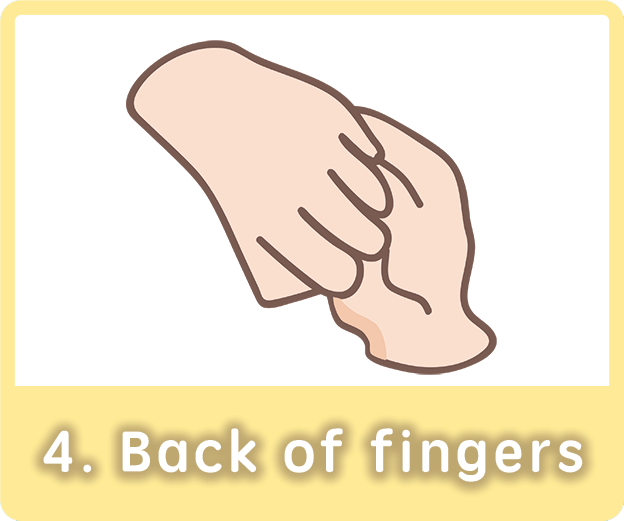
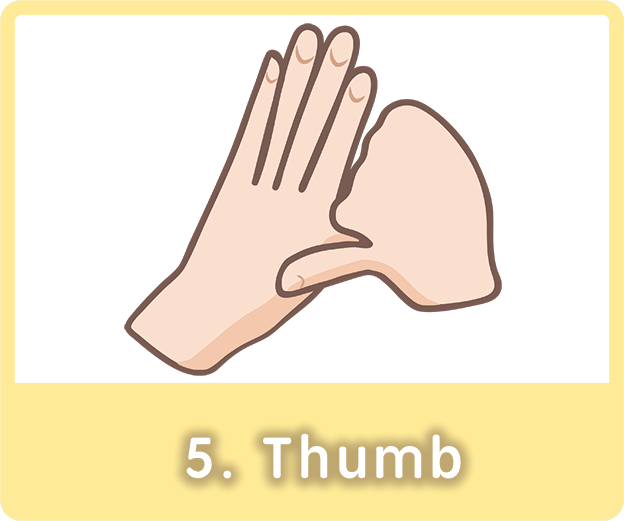

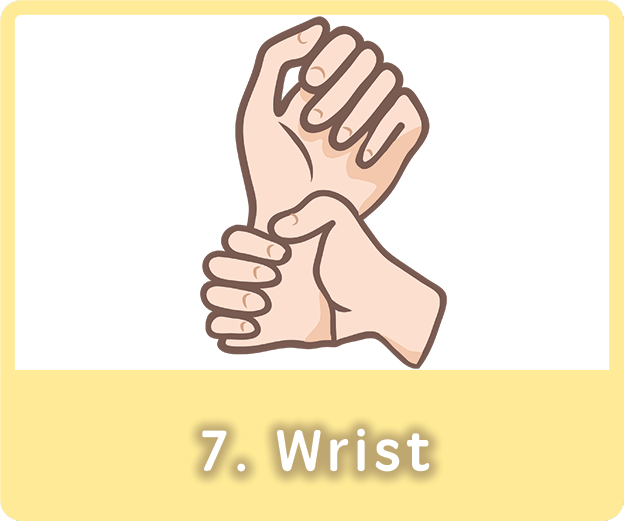
洗手歌
改編自《生日歌》
Singer: Emma Zhang
齊齊來洗手
搓搓手掌手背
手指交叉捽捽指罅
彎起手指洗幾下
大拇指捽一捽
手指尖轉一轉
然後洗洗兩隻手腕仔
咁樣先至okay晒
Personal Hygiene: Facemask
Why do we need a facemask?
Wearing a mask can prevent the spread of respiratory tract infections. People with respiratory infection symptoms (such as cough, sneezing or runny nose) and high potential of getting infected should wear a mask to reduce the chance of transmitting the infection or getting infected. Proper way of wearing facemasks and choosing the correct size can play an important role in preventing the spread of droplet infections.
Steps of proper putting on a facemask:

1. Wash hands before wearing a mask
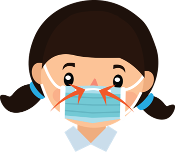
2. Adjust nose piece

3. Ensure the mask covers nose, mouth and chin comfortably and keep it firmly in place
What to DO about wearing a surgical facemask:
- Wash hands whenever contacting a mask.
- Try not to touch or contaminate the mask.
- Do not touch the outside of masks after taking it off.
- Discard and replace any damaged or soiled masks.
- After taking off the mask, put the mask into a plastic or paper bag before putting it into a rubbish bin with a lid.
Contact
Our team members



